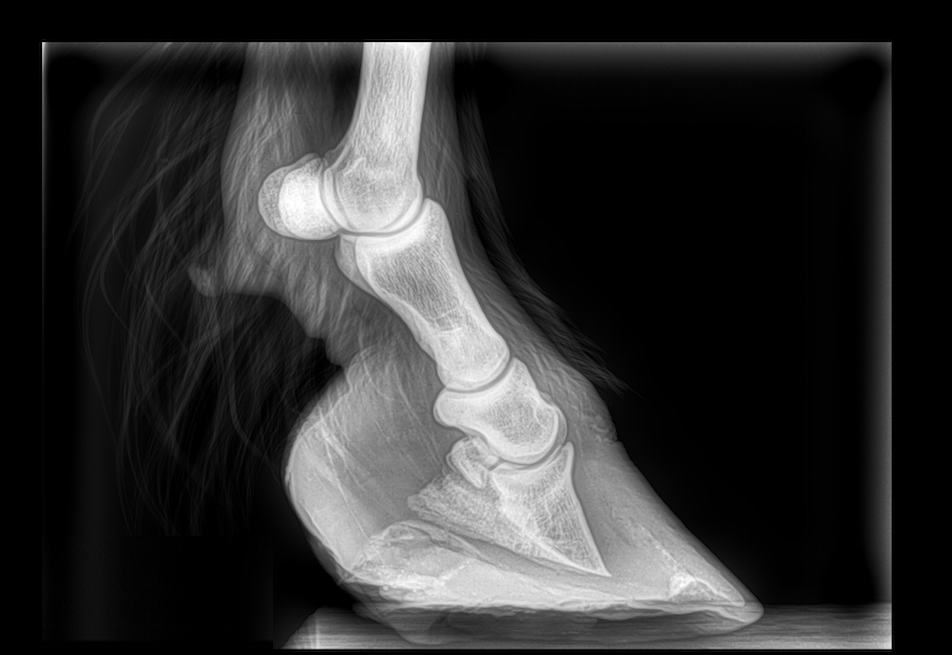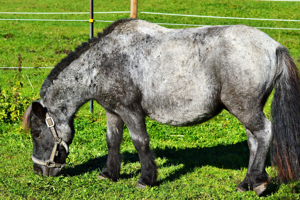Is Grass Always Good?
Whilst for most horses it is, there is too much sugar in it for certain horses and ponies. In this article, Robert Peckham BVMedSci (hons) BVM BVS (hons) MRCVS from Paragon Equine in Cumbria, looks at why this is, and why the sugar in the grass can cause laminitis.
 Laminitis is a common issue in equines in the UK, with 1 in 10 developing laminitis every year. In severe cases when we cannot control the pain, the horse or pony may need to be put down.
Laminitis is a common issue in equines in the UK, with 1 in 10 developing laminitis every year. In severe cases when we cannot control the pain, the horse or pony may need to be put down.
The more we learn about laminitis, the more we realise that most cases are related to hormones. The most important hormone in laminitic equines is insulin, which controls blood sugar levels. As well as hormones there are other causes of laminitis; however these are in the minority and usually relate to horses or ponies which have eaten a bag of concentrates, or are sick/injured.
If a normal healthy equine eats carbohydrate rich food, this is absorbed by the digestive system, raising the blood sugar. In response to this, the body releases insulin, which then works to reduce the blood sugar level. This response is important especially when there is a large amount of sugar in the grass, such as when it is rapidly growing, or there have been repeated sunny days with frosty nights. A healthy horse or pony should be able to cope with this high sugar level by storing and also controlling its appetite.
Insulin Resistance
Most equines which develop laminitis have insulin resistance. This is when the horse or pony’s body doesn’t respond to the insulin. As a response the pancreas releases more and more insulin to try and control the blood sugar levels. When the insulin level is too high for a long period of time, the laminae become inflamed, which is called laminitis. It has been shown that the size of the insulin response directly corelates with the severity of the laminitis. As the swelling occurs inside a solid hoof, the pressure increases ,which is intensely painful. Affected equines may rock back to try and take the weight off their front feet. However signs may be much more subtle, such as stiffness, shifting weight, lameness on two or more feet, coupled with bounding digital pulses and heat in the coronary bands. In severe cases the pedal bone within the foot can sink or rotate because the laminae supporting it have weakened.
The next questions is; why do equines become insulin resistant? The two commonest causes are Equine Metabolic Syndrome (EMS) and Equine Cushings/PPID. Horses and ponies can develop either one or both of these conditions. Equine Metabolic Syndrome
Equine Metabolic Syndrome
Equine Metabolic Syndrome (EMS) is caused by a combination of genetics and clinical obesity. (Clinical Obesity is when a horse or pony has developed a clinical problem from being overweight) Equines of any age can be affected by EMS. When fat cells are overfilled, they start releasing chemicals which disrupt the insulin regulation. A common misconception is that a horse or pony with clinical obesity needs to be hugely overweight. It is also hard to see the abdominal fat inside the belly. This abdominal fat can be one of the most important fat stores which need to be reduced. Your vet can use certain blood samples to measure the fat metabolism. Genetics also come into play, with some EMS equines perhaps only be slightly overweight, yet there may be others which are hugely obese but do not have EMS.
As a general rule, a horse or pony of a healthy weight will NOT have a crest (unless a stallion) or fat pads. If your equine has laminitis, it is easy to check for EMS. This is done by giving a sugary meal/syrup, then your vet taking a blood sample about 1-2hrs later. The insulin level in this sample is checked and if high confirms insulin resistance. This is not an overly expensive test and can be easily combined with other task such as vaccinations. There are other tests for EMS, such as measuring adiponectin levels, which are a sign of how healthy fat cells are, and whether they are overfilled. Your vet can advise which is the most appropriate in your horse or pony.
The best way to prevent, and treat, EMS is weight control and exercise. There are several different body condition score (BCS) charts available, either scoring out of 5 or 9. Any horse or pony with a >3/5 or 7/9 body condition is at risk of EMS and laminitis. With a quick search online you can find a body condition score chart, however I often find the Blue Cross chart useful (https://www.bluecross.org.uk/pet-advice/how-body-score-your-horse). Weigh taping weekly is a really good method of checking your equine is losing weight - and not putting more on! However using a weigh bridge, if available, is the best measure of checking on weight change. Hard exercise also helps the insulin regulation. Once your horse or pony is comfortable, we’d recommend at least 20 minutes of exercise three times a week. The exercise needs to be at a level where the horse or pony is out of breath. Often with small ponies, you may need to lunge them, as they won’t work hard enough when being ridden by a young child.
Equine Cushings/PPID
The other common cause of insulin resistance is Equine Cushing’s or PPID (PPID – Pituitary Pars Intermedia Dysfunction). These are two names for the same disease. It is an aging disease which usually affects equines in their late teens, with one in five over the age of 17 having it. Most horses and ponies with PPID are over 10, but in very rare cases some as young as 7 have been diagnosed with Equine Cushings.
In Equine Cushing’s, the equine’s pituitary gland release too much ACTH. The actual theory of how this increased level causes laminitis is heavily debated. This overproduction can be treated with a daily tablet. Unfortunately we cannot cure it, just manage it with the medication so the treatment is life-long.
The most common test for Equine Cushing’s is a single blood sample to check ACTH levels. In certain circumstances your vet may recommend a more accurate but more expensive TRH stimulation test. We would usually recommend testing any horse or pony which has had laminitis and is over 10 years old. If the horse or pony hasn’t had laminitis but shows other signs of Cushings, it is worth testing to prevent laminitis in the future. These other signs may include delayed coat shedding/curly coat, increased thirst/urination, lethargy, recurrent infections, abnormal sweating, muscle wastage, abnormal fat deposits, and reduced fertility. If you are concerned about Equine Cushing’s in your equine, vouchers for a free Equine Cushing’s lab test are available on the www.careaboutcushings.co.uk website.
Dietary Management
If any equine has uncontrolled Equine Cushings or EMS, it is important to restrict sugar in the diet. If sugar levels are kept low, this will help stop the blood insulin levels rising too high. First we’d recommend stopping any hard feed. Hard feed containing grains have a lot of sugar in them, and most overweight horses and ponies do not need any concentrate as they are already getting too many calories! Next is the forage, which can also contain a large amount of sugar. Grass generally contains the most carbohydrate, followed by haylage, then hay. The quantity of carbohydrate also varies massively between different batches. In general late cut hay has less sugar, although it depends on what the climate was when it was cut. Soaking hay for over an hour removes some (but not all) the sugar, however it also removes many vitamins and minerals. If feeding soaked hay, it is worth feeding a balancer at the same time to replace these.
If too much grass can cause obesity and EMS, how do we stop equines becoming overweight in fields? First it is important to restrict the size of a paddock, NOT the length of turnout. This is because horses and ponies are smart. If they are only turned out for a couple of hours, they will gorge and eat a significant amount of their daily requirement. A horse or pony can eat 80% of its daily grass intake in four hours. Grazing muzzles are a helpful tool, but you may need to try a couple to find one which stays on. Make sure they are not rubbing and also that the horse or pony can drink through them.
One system which can work really well is using a wide grazing track around the edge of a field rather than paddocks. If it is created with movable electric fences, when the horses or ponies need more grass, the inner fence can be moved in, making a wider track. They will then walk around the track all day looking for more grass, meaning they are exercising much more than if they were standing in the centre of a small bare paddock.
Article by Robert Peckham, BVMedSci (Hons) BVM BVS (Hons), Paragon Equine.
Tel: 01768 483789
Email: Paragon Equine, Newbiggin, Cumbria
Website: This email address is being protected from spambots. You need JavaScript enabled to view it.



